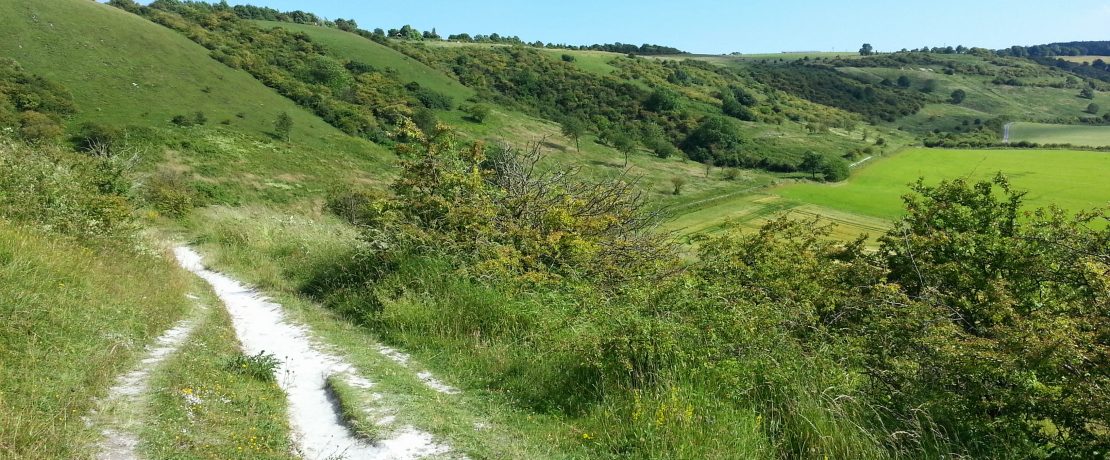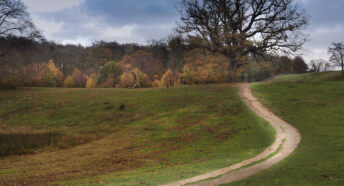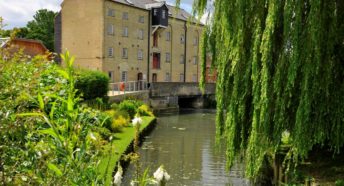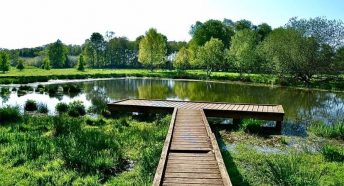C is for… chalk
Our new series of posts helping you to explore our county is an A-Z of Bedfordshire places, landscapes and history. Each post will include tips for walks and places to visit.
The chalk landscapes of the Chilterns dominate the south of Bedfordshire, from the dramatic chalk ridge to the wildflower rich meadows and ancient beech woods. This feature explores how this special landscape came to be formed, the hidden stories of the people who lived and worked here, and its importance for wildlife.
Geology
Bedfordshire today is landlocked, but 70 million years ago the area was under a warm shallow sea. The water teemed with life – microscopic algae, sea urchins, sponges, ammonites and bivalves with their two-part hinged shells protecting their soft bodies. As the microscopic algae died, it fell to the bottom of the sea, forming chalk, a very pure form of limestone with no trace of sand or mud. When the Ice Age arrived, around 2.6 million years ago, the sea levels fell, and glacial erosion shaped the landscape into the dry valleys and chalk ridges that we see today.
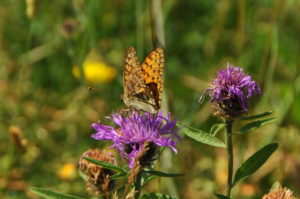
Lives in the landscape
People have lived and worked on the Chalk for thousands of years. They have also travelled along it. The Ickneild Way is an ancient path that linked the Dorset coast with East Anglia. It ran along the ridge of the chalk hills, safely above the lower marshier ground, and is estimated to be at least 5,000 years old. Over the centuries it was used by traders, farmers, settlers and pilgrims. The area was also crossed by drove roads, used to move livestock between pastures and markets, both local and further afield.
Prehistoric sites include the Five Knolls Barrow Cemetery on Dunstable Downs. Barrows are burial mounds constructed in chalk over individual burials with later burials (usually cremations) dug into the outside of the mounds. Excavations in the 1850s and 1920s showed that the cemetery originated in the late Neolithic and Bronze Age periods (3,000-1,200 BC). The site was later re-used by the Romans. Sharpenhoe Clappers was home to an Iron Age Hill Fort (800 BC – 43 AD), part of a series of defensive sites along the ridge.
There is some archaeological evidence of Roman lime kilns. Burning good quality chalk or limestone at high temperatures results in quicklime, when added to water this produces lime putty which was used to make lime mortar and lime wash for building. More modern forms of lime working in the area included cement manufacture and the whiting industry which thrived in the late 19th century. Whiting was used in whitewash, paint, toothpaste and indigestion tablets.
The Pillow Mounds on the Downs were probably used as rabbit warrens, land set aside for the breeding and management of rabbits, during the medieval period. Rabbits were bred for their meat, fur and skins, Sharpenhoe Clappers is another medieval warren. The word Clappers derives from the Latin word ‘claperius’ meaning a rabbit hole.
The medieval period also saw the heyday of the Totternhoe chalk quarry. The quarry belonged to Dunstable Priory and was an important source of income. The stone was soft when freshly quarried and was sought after for carving and, because it was light, for building church vaults. Many local churches, as well as Westminster Abbey, feature Totternhoe stone.
The thin soils of the Chalk were difficult for farmers looking to grow crops. They tended to be used for sheep grazing instead, with the fleeces providing another source of income for medieval monasteries. Occasionally farmers would try and cultivate crops on narrow terraces on the steep hillsides, following the contours of the geology. These features are known as strip lynchets and can still be seen in the landscape.
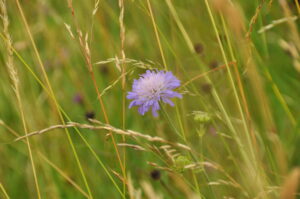
Wildflowers
It might feel counterintuitive but the richness of chalkland fauna is due to the lack of nutrients in the soil. The poor soil, combined with grazing, reduces the competitiveness of many vigorous plants and allows smaller wildflowers to flourish. Bedfordshire’s open and well-draining chalk grasslands are an incredibly important and relatively rare habitat. Chalk specialists include orchids, great pignut, scabious, wild thyme, meadow oat grass, and birds-foot trefoil.
Woodland
The thin soils were easily cleared of trees by early settlers, but pockets of woodland remain. Beech woods are a distinctive feature of the landscape of the Chilterns. Sharpenhoe Clappers is an excellent example of an ancient beech woodland.
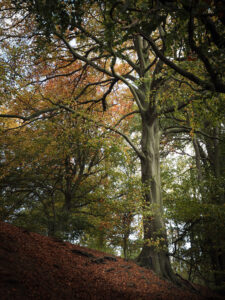
Wildlife
Butterflies and moths thrive on the nectar of the wildflowers. Species such as the Duke of Burgundy, the Chalk Hill Blue and Dark Green Fritillary can be spotted. Birds include wheatears, skylarks, red kite and other birds of prey. You might also spot dragonflies and damselflies around the wetland areas such as the chalk quarries at Sundon and Houghton Regis.
Walks and sites to visit
There are plenty of opportunities to explore the chalk landscapes of the area. The Dunstable Downs are the highest point in the East of England and provide wonderful views across open countryside.
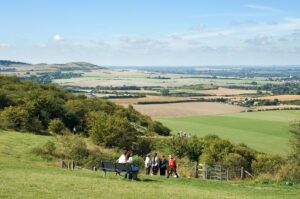
The National Trust have several walks starting from their visitor centre on Dunstable Downs:
- Dunstable Downs countryside walk (6.5 miles)
- Whipsnade and Dunstable Downs walk (4.5 miles)
- Dunstable Downs Five Knolls wildlife and heritage walk (1.9 miles)
The National Trust also manage Sundon Hills, Moleskin and Markham Hills, Sharpenhoe Clappers and Smithcombe Hills.
The Chilterns National Landscape have a number of walks in Bedfordshire:
- Lilley and Warden Hill Loop (4.8 miles)
- Pegsdon and Deacon Hill Walk (3.5 miles)
- Galley and Warden Hills (three routes)
The Icknield Way Path website has two walks in Bedfordshire, one in Sundon Hills and one from Sharpenhoe Clappers.
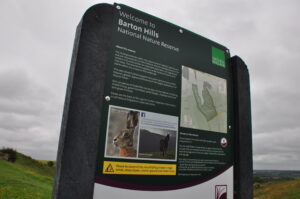
The Wildlife Trust for Beds, Cambs and Northants manages a number of nature rich chalk sites:
